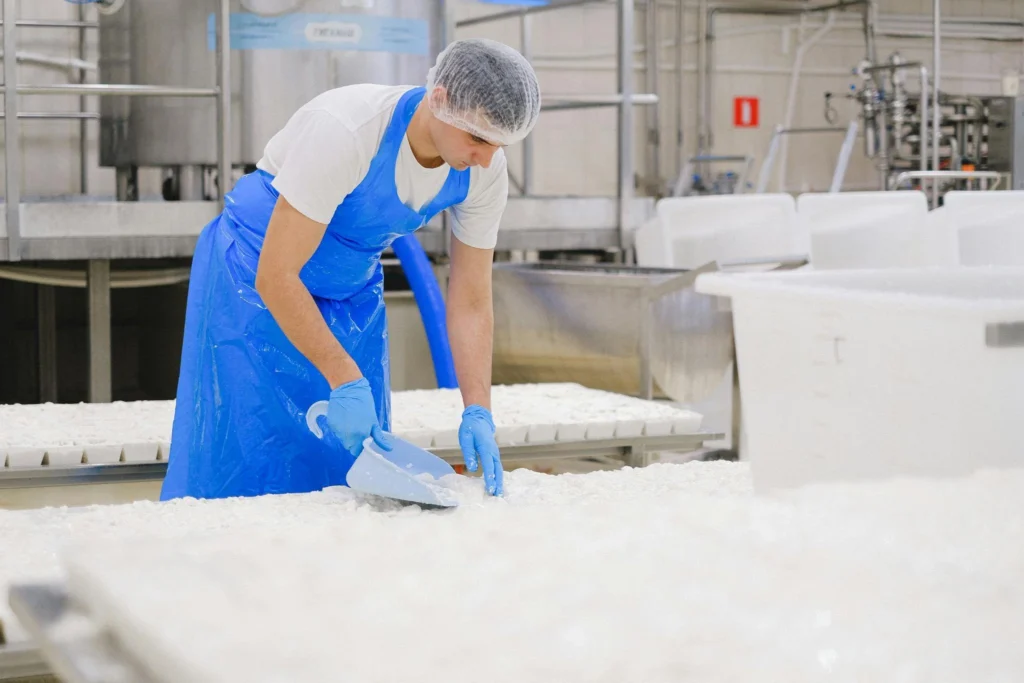Have you ever walked into a food plant and noticed how spotless everything looks? That level of cleanliness does not happen by chance. It’s the result of strict hygiene practices, good planning, and the right equipment. In food processing, hygiene is more than a regulatory requirement. It’s a key factor that affects product quality, worker safety, and brand reputation of Food Processing Plants.
When hygiene slips, it can lead to contamination, product recalls, and lost trust. But when done right, efficient hygiene management saves time, reduces waste, and keeps the facility running smoothly. Let’s explore how food processing plants can boost hygiene efficiency through better equipment, smarter layouts, and stronger habits.
Discover hidden gems—Related Posts that take your curiosity further!
1. Modern Equipment That Simplifies Sanitation
The right equipment makes a huge difference in maintaining hygiene. Today’s food plants use advanced systems that clean more effectively while saving time and water. These machines take away a lot of the manual effort and make sure every surface meets sanitation standards.
Using specialized equipment like a rack washer helps clean cooking racks and smoke trucks quickly, ensuring consistent hygiene in high-volume plants. Instead of relying on manual scrubbing, this type of system uses high-pressure water jets and controlled heat to remove grease and residue. It’s faster, safer, and more consistent than traditional cleaning methods.
When food processors invest in reliable cleaning systems, they reduce downtime between production cycles. The wash process becomes repeatable and easy to monitor. It’s also important to schedule regular maintenance checks on this equipment. Clean filters, calibrated sensors, and working pumps keep the machines efficient. The goal is to make hygiene a built-in part of the workflow, not an afterthought for Food Processing Plants.
2. Designing a Plant Layout That Supports Clean Operations
Even the best equipment can’t do much if the plant layout doesn’t support hygiene. A well-planned facility layout can prevent cross-contamination, improve workflow, and make cleaning easier.
Food processing plants should clearly separate raw and cooked areas. This keeps bacteria from raw ingredients from reaching ready-to-eat products. Airflow should move from clean areas toward dirtier ones, never the other way around. It’s also a good idea to have distinct color-coded tools and cleaning supplies for each section to prevent mix-ups.
Hygiene efficiency also depends on accessibility. Washing stations, drains, and sanitation supplies should be within easy reach. Employees shouldn’t have to walk across the entire facility to wash their hands or clean equipment. For instance, placing boot wash stations and hand sanitizing sinks near entry points to production areas saves time and prevents contamination.
Smooth traffic flow is another factor. When workers and materials move in one direction, it reduces backtracking and the spread of contaminants.
3. Building a Culture of Clean
A plant can have the best layout and equipment, but without the right habits, hygiene goals will fall short. The people working inside the facility shape the hygiene culture every day.
Training employees regularly on cleaning practices, personal hygiene, and safety standards keeps them alert and confident. Even short refresher sessions can help reinforce best practices. When workers understand why hygiene matters, they take more ownership of their role in it.
It helps to make hygiene everyone’s responsibility, not just the cleaning crew’s. Supervisors, line operators, and maintenance staff all play a role in keeping the environment clean. Managers can encourage teamwork by recognizing good hygiene performance and providing feedback when issues arise.
Simple things also help a lot, like posting reminders near sinks, color-coding cleaning tools, and scheduling regular cleaning checklists. When cleanliness becomes part of the daily routine, efficiency naturally follows.
4. Automating Data and Sanitation Records
Tracking cleaning activity manually can lead to mistakes or missed tasks. Automation makes hygiene tracking much easier and more accurate.
Many food processors now use digital systems that log when and how often equipment was cleaned. These tools can send alerts when a cleaning cycle is due and even verify that the process was completed. This helps teams stay organized and ensures nothing is overlooked.
Smart sensors can monitor water temperature, detergent levels, and cycle duration. If a wash doesn’t meet set standards, the system can alert the operator right away. This kind of data makes audits smoother because all sanitation records are stored digitally and are easy to retrieve.
Automation also improves transparency. When everyone on the team can see what’s been cleaned and what hasn’t, accountability increases.
5. Reducing Waste While Cleaning
Sustainability is a growing focus in every industry, and hygiene systems are no exception. Efficient sanitation shouldn’t mean wasting water, energy, or cleaning chemicals.
Modern cleaning equipment often includes water recycling systems that reuse rinse water for pre-washing. This simple step can reduce water use significantly. Energy-efficient heaters and pumps also lower utility costs while maintaining cleaning effectiveness.
Food plants can go even further by using biodegradable detergents and eco-friendly disinfectants. These options are safer for employees and reduce the impact on wastewater systems. Training staff to use only the needed amount of cleaning solution also cuts waste. Small changes, like turning off hoses when not in use or using spray nozzles with pressure control, can add up over time.
6. Regular Audits and Continuous Improvement
Audits are essential for keeping hygiene systems strong. Internal hygiene audits help spot weak areas before they become serious issues.
During an audit, teams can review cleaning logs, inspect equipment, and talk to employees about any challenges they face. This process helps managers understand what’s working and what needs improvement.
Once issues are identified, plants should take quick action. Whether it’s updating procedures, adding new tools, or adjusting cleaning schedules, every change should aim to make hygiene faster and more reliable.
Continuous improvement means never getting comfortable. Even if things look clean, there’s always room for better efficiency. Listening to feedback from sanitation staff can lead to smarter workflows that save time without cutting corners.
Keeping a food processing plant clean takes more than effort. It takes planning, teamwork, and the right tools. When plants invest in modern equipment, design smart layouts, train their staff, and automate their cleaning records, they create a cleaner and more efficient operation.
The key is consistency. A clean plant runs smoother, meets safety standards, and gives customers confidence in the products they buy. Start by improving one area at a time, and soon hygiene will become second nature throughout the facility.
Keep exploring—fresh stories and bold ideas await beyond this click!






